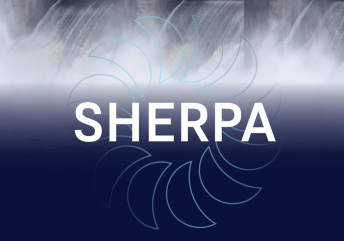
The SHERPA project, funded by the European Commission under the Horizon Europe Program, has officially launched, with the 42-month initiative aiming to enhance the operational range, performance, and environmental impact of hydropower plants.
The project brings together seven key partners from across Europe to develop innovative solutions aimed at improving the efficiency and sustainability of hydropower plants. The consortium includes partners from four EU countries: Iberdrola Generación S.A. (project coordinator), Asociación de Investigación Metalúrgica del Noroeste, Voith Hydro Holding GmbH & Co, EPRI Europe DAC, Innomerics SL., Aecom Inocsa S.L., and Zabala Innovation.
The project kickoff meeting was held at the Basque Delegation in Brussels in September. Marta Marin, Basque Delegate to the European Union, opened the event, and the project’s coordinator from Iberdrola presented an overview of the initiative. Each partner outlined their work packages, and Clara Astudillo, the European Commission’s Project Officer, provided guidance on compliance and reporting.
Hydropower turbines face operational challenges due to fluctuating energy demands and the need for more flexibility. Environmental flow (E-flows) regulations often force turbines to operate outside their optimal conditions, leading to inefficiencies, increased wear, and higher maintenance costs. The SHERPA project seeks to address these challenges by developing and validating new technologies for refurbishing hydropower plants.
The project’s key technological innovations include:
- Advanced materials and coatings to reduce damage and enhance resistance to cavitation.
- Adaptive rotational speed strategies to adjust turbine speed based on water flow.
- Air injection systems to improve water quality and operational efficiency.
- New runner designs tailored for better performance under E-flow conditions.
SHERPA will also use advanced modelling, simulation, and monitoring tools to assess the impact of these solutions on energy output, cost-effectiveness, and biodiversity. The goal is to extend the operational range of hydropower plants without compromising their economic viability or environmental and social impact.
SHERPA will tackle 10 key technological challenges across four main areas:
1. Mechanical solutions to improve performance and reduce damage at low
water flows.
2. Electrical solutions for optimizing performance and reducing damage under
fluctuating conditions.
3. Measures to enhance water quality and protect biodiversity.
4. Advanced tools for modelling, performance monitoring, and predicting the
remaining useful life of turbine components.
SHERPA stands for SHERPA stands for Solutions for Hydropower plants to Enhance operational Range, Performance, and improve environmental impact.
.






